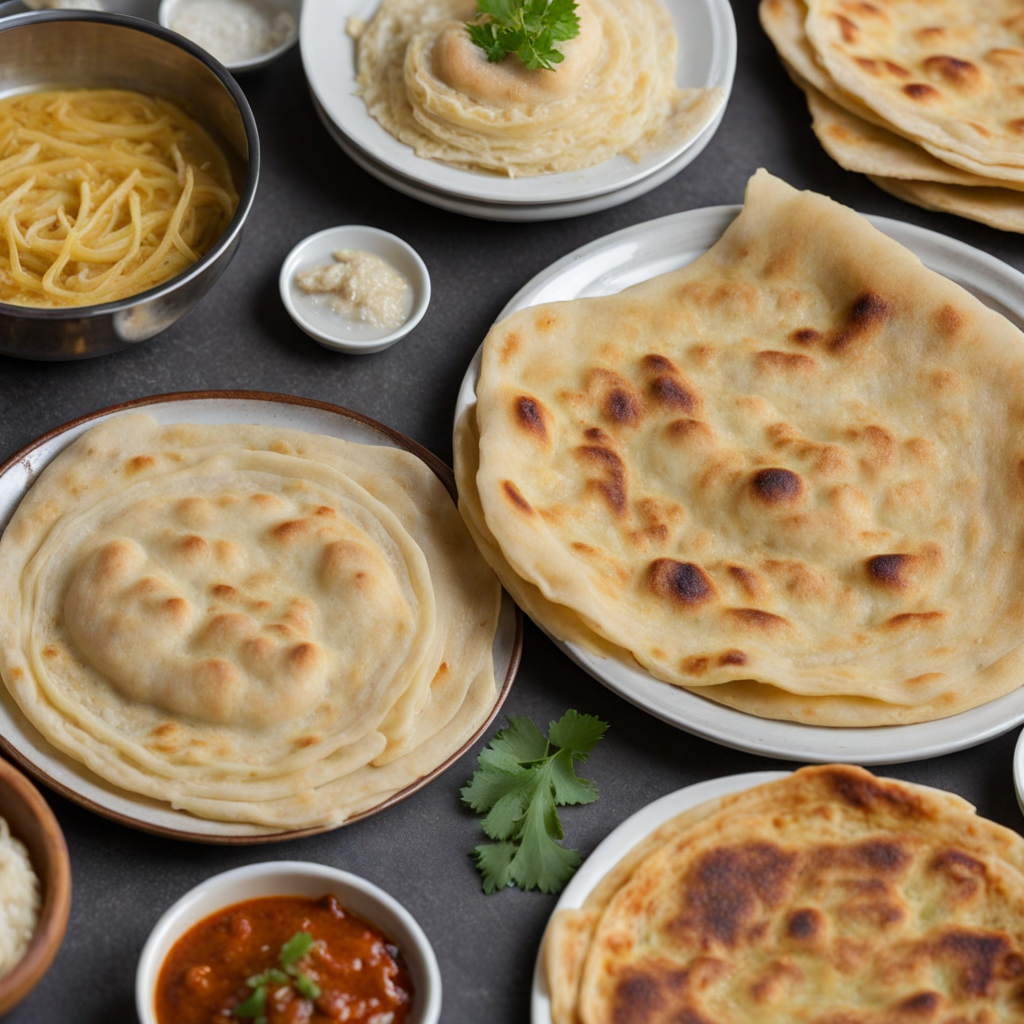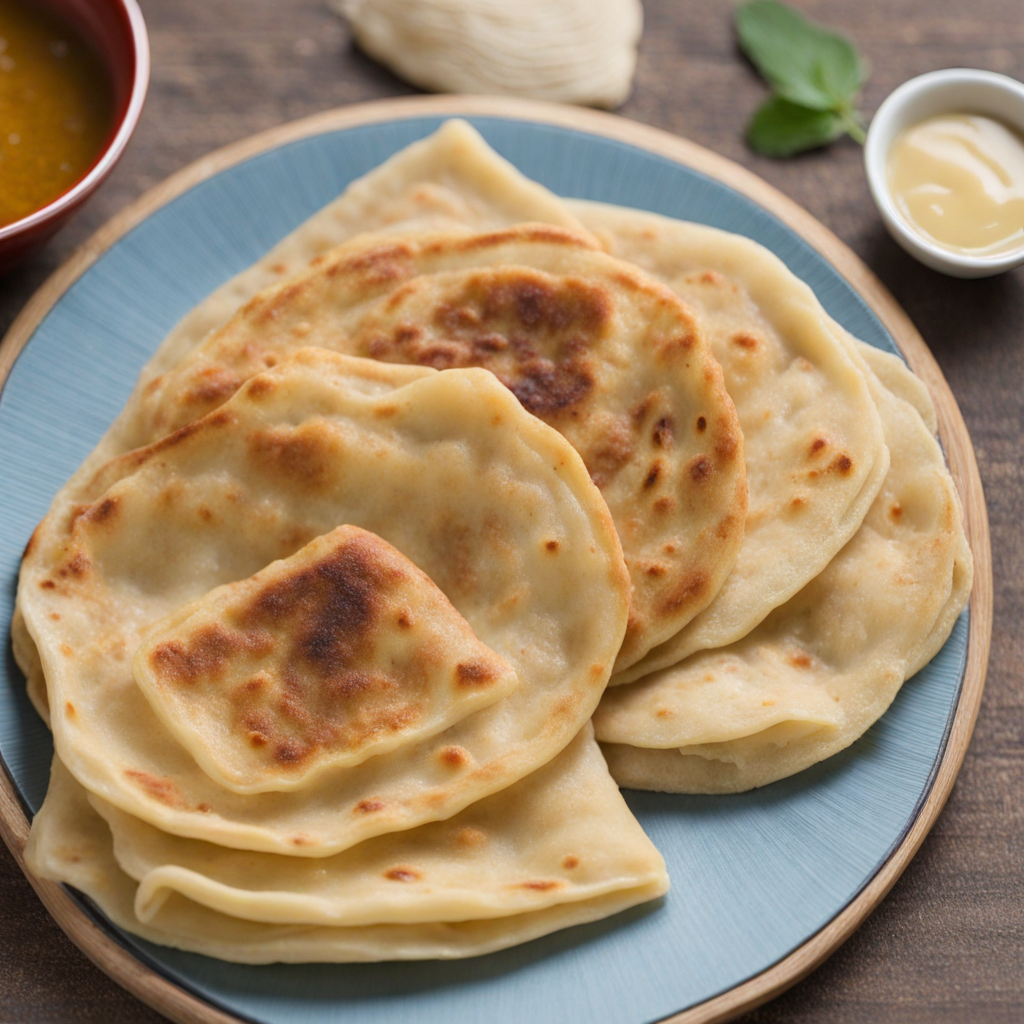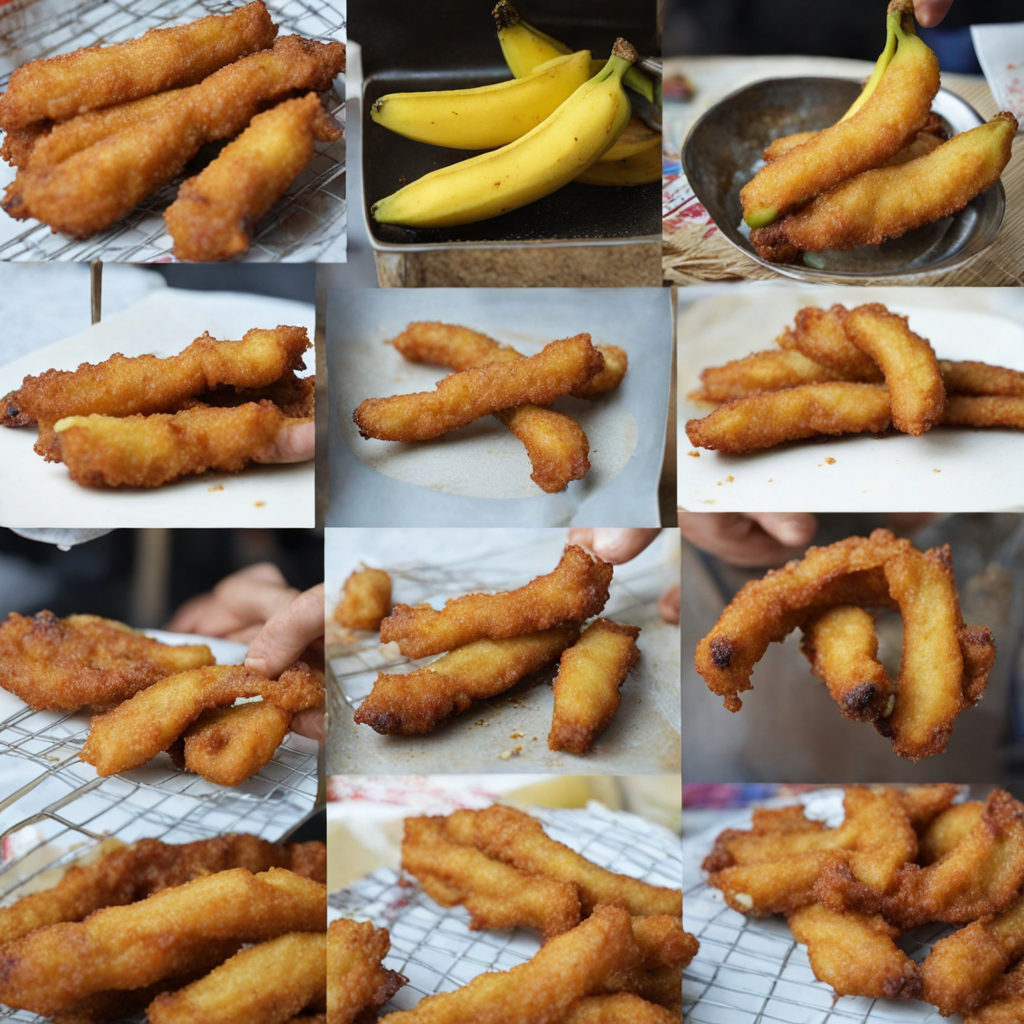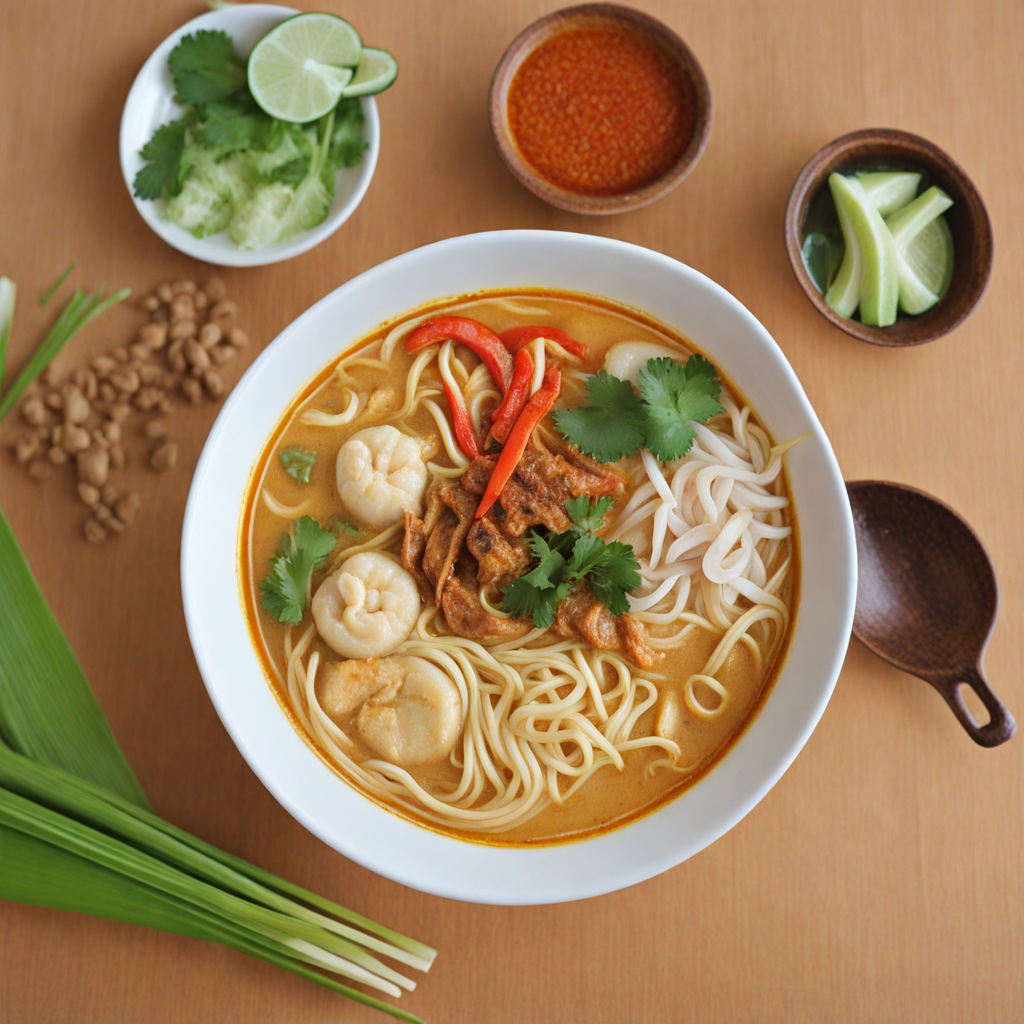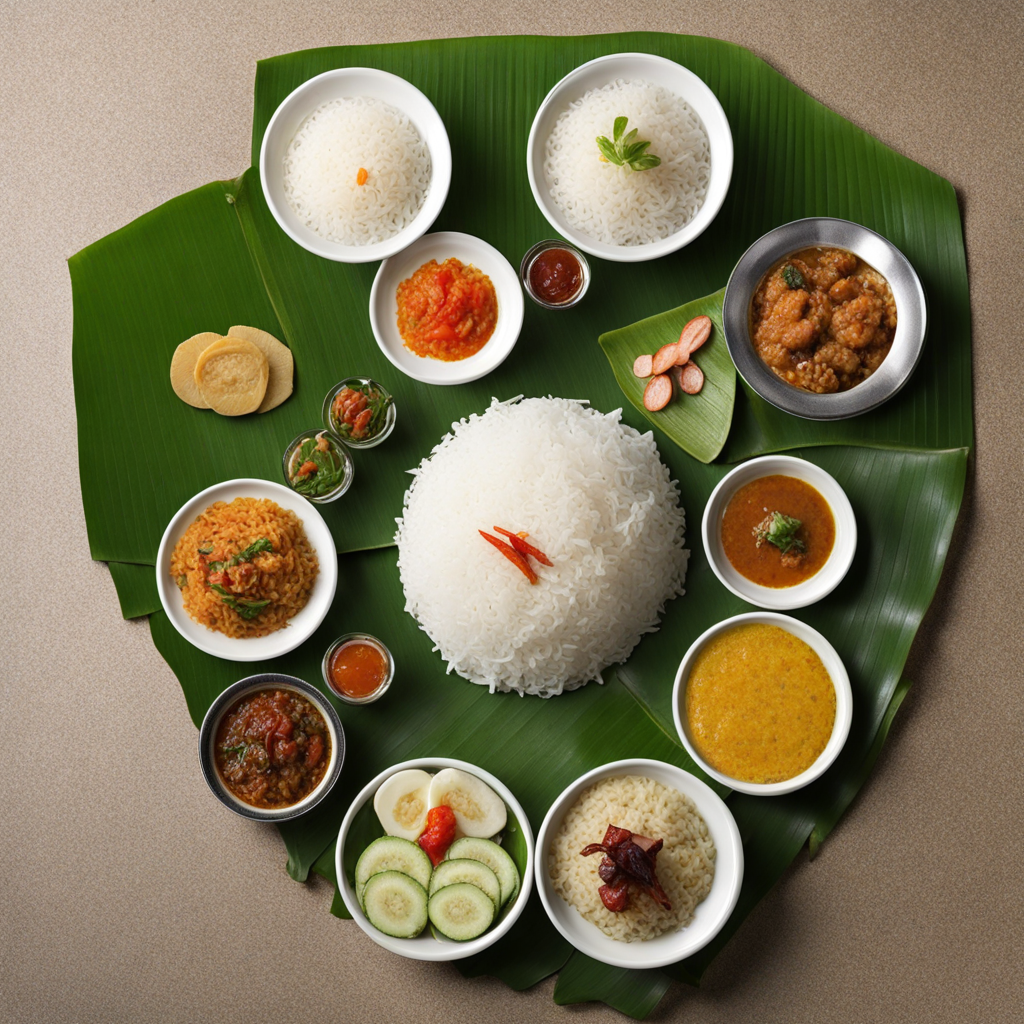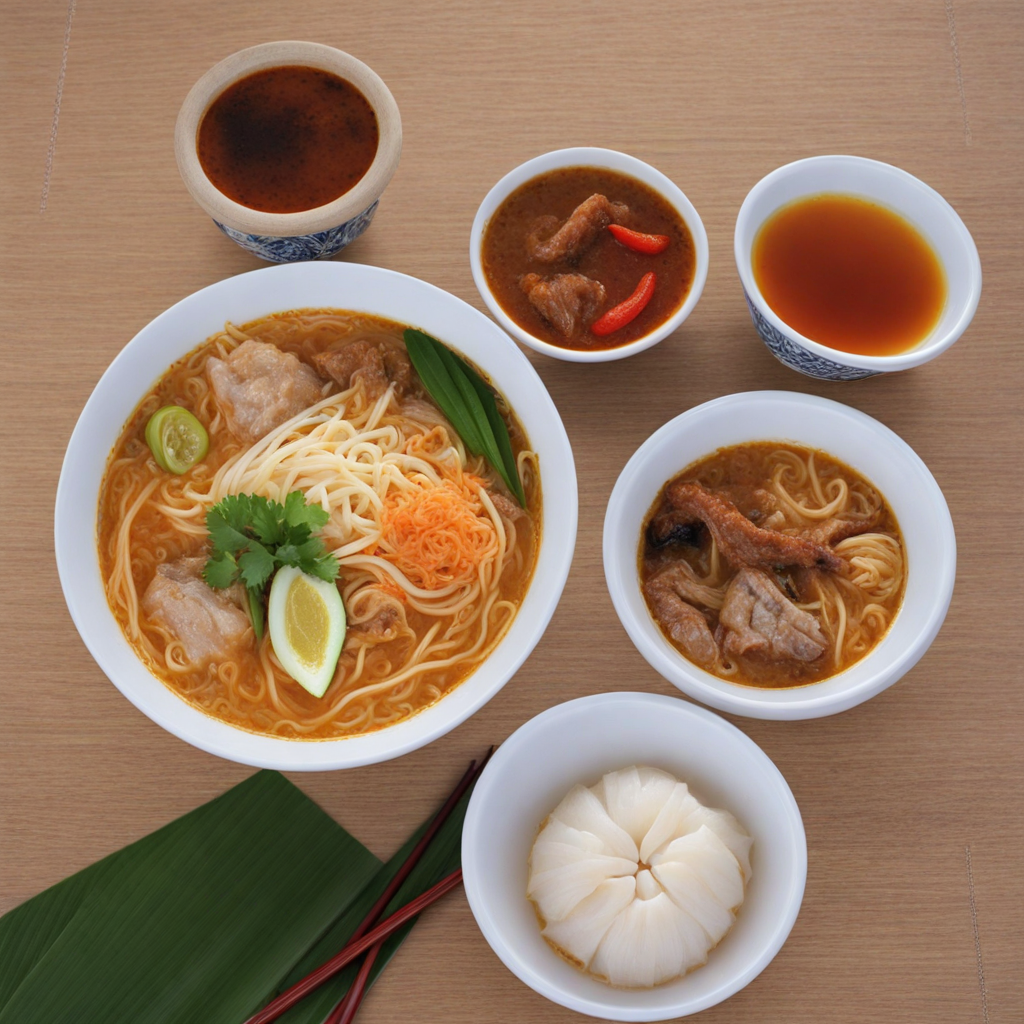Roti Canai
Roti Canai is a beloved Malaysian flatbread that showcases the country’s rich culinary heritage. This flaky, buttery delight is made from a simple dough of flour, water, ghee (clarified butter), and salt, which is expertly kneaded and then allowed to rest. The magic happens when the dough is stretched and folded multiple times, creating layers that puff up beautifully when cooked. The result is a golden-brown exterior with a crisp texture, while the inside remains soft and airy, making it a perfect accompaniment for various dishes or a standalone snack. Traditionally enjoyed with dhal (lentil curry), Roti Canai can also be paired with a variety of rich sauces and curries, such as chicken curry or fish curry, enhancing its flavor profile. The interplay of the roti's buttery taste and the aromatic spices of the curry creates a delightful contrast that excites the palate. Additionally, it can be served with sugar or condensed milk for those with a sweet tooth, providing a deliciously versatile option that caters to both savory and sweet cravings. Roti Canai is often found at street stalls and mamak eateries, where it is prepared fresh to order. Watching the skilled chefs toss and flip the dough is a captivating experience in itself, adding to the dish’s appeal. Whether enjoyed as a hearty breakfast, a snack, or a late-night treat, Roti Canai is a true representation of Malaysia’s multicultural culinary landscape, inviting food lovers to savor its unique textures and flavors.
How It Became This Dish
The History of Roti Canai: A Culinary Journey Through Malaysia #### Origins of Roti Canai Roti Canai is a beloved Malaysian flatbread that has become a staple in the country’s diverse culinary landscape. Its origins are somewhat nebulous, with various theories suggesting that it was brought to Malaysia by Indian Muslim immigrants known as "mamas" or "mamasans" during the 19th century. The term "canai" is believed to derive from the Indian word "chennai," referring to the city of Chennai (formerly Madras), which was a significant port city in South India. This connection highlights the cultural and culinary exchanges that occurred through trade routes and migration, which are pivotal in understanding the evolution of Malaysian cuisine. The technique of making roti, which involves stretching and folding dough to create flaky layers, is reminiscent of the South Indian paratha and the Middle Eastern khubz. The flatbread is traditionally made from a simple mixture of flour, water, and fat (usually ghee or oil), which is kneaded and then allowed to rest before being shaped and cooked on a hot griddle. The art of rolling and flipping the dough creates the characteristic layers that define roti canai, making it both visually appealing and texturally satisfying. #### Cultural Significance Roti Canai is more than just a food item; it holds significant cultural importance in Malaysia. It is often enjoyed for breakfast, served with a side of dhal (lentil curry), sambal (a spicy chili paste), or various meat-based gravies. Its versatility means it can be paired with sweet or savory accompaniments, making it a popular choice for people of all ages and backgrounds. The flatbread is emblematic of Malaysia's multicultural society, reflecting the influences of Indian, Malay, and Chinese cuisines. In a country where food serves as a unifying force among different ethnic communities, roti canai exemplifies the harmonious blend of flavors and traditions. It is commonly found in mamak stalls—casual eateries run by Indian Muslims—where locals gather to enjoy a late-night snack or a hearty meal. The convivial atmosphere of these establishments, combined with the tantalizing aroma of freshly cooked roti, creates a vibrant culinary scene that is deeply rooted in Malaysian culture. #### Development Over Time As Malaysia evolved through the 20th century and beyond, so too did roti canai. Initially, it was predominantly consumed by the Indian Muslim community; however, it gradually gained popularity among the wider population. The post-independence era saw an increase in the appreciation for local dishes, and roti canai became synonymous with Malaysian identity, bridging the gap between different ethnic groups. In the 1980s and 1990s, the globalization of food culture further propelled the popularity of roti canai. The rise of food courts and hawker centers, where various stalls offer an array of dishes, made it easier for people to access roti canai at any time of day. This accessibility contributed to its status as a comfort food, beloved across generations. The dish has also seen various adaptations over time. While the traditional plain roti canai remains a favorite, creative variations have sprung up, showcasing the flexibility of this flatbread. Cheese-filled roti canai, roti telur (egg-filled), and even dessert versions with chocolate or condensed milk have emerged, appealing to a broader audience and keeping the dish relevant in contemporary food culture. The rise of social media has also played a role in the evolution of roti canai. Food bloggers and influencers have showcased unique takes on the dish, introducing it to a global audience. The hashtag #roti canai has gained traction on platforms like Instagram, resulting in a newfound appreciation for this Malaysian classic beyond its borders. #### Roti Canai in the Global Context As Malaysian cuisine has gained international recognition, roti canai has found its way into restaurants and food festivals around the world. Its appeal lies not only in its delicious taste but also in its story—a testament to the rich cultural tapestry of Malaysia. Chefs and food enthusiasts alike have embraced the dish, incorporating it into fusion menus or presenting it as part of a broader exploration of Southeast Asian flavors. In recent years, culinary tourism has created opportunities for food lovers to travel to Malaysia and experience the authentic flavors of roti canai firsthand. Visitors are often drawn to the lively atmosphere of mamak stalls and local eateries, where they can witness the skillful preparation of the flatbread and enjoy it in its traditional context. #### Conclusion Roti canai is more than just a flatbread; it is a symbol of Malaysia's rich culinary heritage and multicultural identity. Its journey from the streets of Chennai to the bustling hawker centers of Malaysia encapsulates a history of migration, adaptation, and cultural exchange. As it continues to evolve and inspire new generations of food lovers, roti canai remains a quintessential part of Malaysia's food landscape, representing the flavors, stories, and traditions that define this vibrant nation. Today, whether enjoyed at a roadside stall or in a high-end restaurant, roti canai serves as a reminder of the power of food to connect people, transcend borders, and celebrate the diversity of cultures that contribute to the unique tapestry of Malaysian life. Through each flaky layer, we taste the history, resilience, and innovation that make roti canai a cherished dish, not only in Malaysia but around the world.
You may like
Discover local flavors from Malaysia


